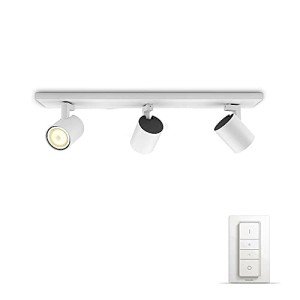Decorative Lighting in the UK: A Comprehensive Guide
In current years, decorative lighting has actually taken centre phase in interior style throughout the UK. Homeowners and decorators alike are progressively identifying the significance of lighting not simply for performance, but likewise for aesthetic appeals. This short article digs into the different types of decorative lighting offered, the most recent trends in the UK market, and useful suggestions for picking and setting up the best lighting to improve numerous spaces in homes.
Comprehending Decorative Lighting
Decorative lighting incorporates a broad variety of light fixtures that serve to boost the charm of a space while also supplying illumination. This type of lighting adds a touch of style, character, and warmth to environments, creating state of minds and highlighting architectural functions. The key difference between decorative lighting and other types of lighting, such as task or ambient lighting, is that decorative lighting mainly intends to produce visual appeal.
Types of Decorative Lighting
There are different types of decorative lighting that house owners can pick from, including:
- Chandeliers: Often the focal point of dining locations or grand entrances, chandeliers are elaborate lights with numerous bulbs and creative styles.
- Pendant Lights: Suspended from the ceiling, pendant lights are available in different styles, making them appropriate for cooking areas, dining locations, or living spaces.
- Wall Sconces: Mounted on walls, these fixtures can offer ambient lighting or spotlight specific areas, such as art work or architectural details.
- Table Lamps: Used on bedside tables, desks, or side tables, they can vary from minimalist styles to elaborate artistic pieces.
- Floor Lamps: These flexible fixtures can fill empty corners while offering both ambient and job lighting.
- Fairy Lights: String lights or fairy lights include a whimsical touch to both indoor and outdoor areas, perfect for developing an inviting atmosphere.
- Neon Signs: An emerging trend, neon indications include a modern, metropolitan flair and are popular for home bars, video games spaces, and individual spaces.
Existing Trends in Decorative Lighting
The UK lighting market has actually experienced numerous developing patterns that reflect consumer preferences and developments in technology. Some of the prominent trends consist of:
- Sustainable Lighting: Eco-friendly choices, such as LED lighting, are progressively favoured for their energy performance and lower carbon footprint.
- Smart Lighting: Integration of smart innovations permits house owners to manage their lighting through mobile phones or voice assistants, offering convenience and adaptability.
- Vintage and Industrial Designs: The rustic charm of vintage and industrial designs stays in style, as they can effortlessly blend with both modern and traditional interiors.
- Geometric Shapes: Light fixtures including bold geometric shapes contribute to a contemporary aesthetic that appeals to modern homeowners.
Selecting the Right Decorative Lighting
When choosing decorative lighting, it is crucial to think about the following factors:
- Purpose: Determine the main function of the lighting. Is it to produce an inviting atmosphere, emphasize artwork, or provide practical lighting for activities?
- Style: Carry out research study to guarantee that the chosen lighting matches the existing decoration and reflects personal design choices.
- Size: Consider the scale of the area. Extra-large fixtures can overwhelm small spaces, while small options may appear lost in larger locations.
- Positioning: Think critically about where the fixtures will be set up, ensuring they are accessible and effectively brighten the intended locations.
- Energy Efficiency: Opt for energy-efficient LEDs whenever possible to minimize energy bills and add to sustainability.
Installing Decorative Lighting
When decorative lighting choices have been selected, proper setup is crucial to achieving the wanted effect. Here are some guidelines to follow:
- Mounting Height: Ensure that chandeliers and pendant lights hang at a proper height. They ought to offer adequate light without blocking views or movement.
- Layered Lighting: Incorporate various layers, including task, ambient, and decorative lighting, to produce balance and depth within a space.
- Dimmers: Installing dimmer switches can offer versatility in adjusting light intensity based upon activities and state of mind.
- Expert Assistance: For complex installations, it might be advantageous to hire an expert electrical expert to ensure security and compliance with local regulations.
Decorative lighting offers a fantastic opportunity for homeowners in the UK to express their style while improving the functionality of their areas. With a range of choices available, careful consideration of factors such as style, size, and placement can cause sensational outcomes. As trends continue to progress, people can remain on the cutting edge of decorative lighting style.
Regularly Asked Questions (FAQs)
Q: What is the distinction in between decorative lighting and ambient lighting?A: Decorative lighting is mostly focused on visual appeal, while ambient lighting provides general lighting for a space. Q: How can I pick the right size chandelier for my dining room?A: A typical general rule is to add the dimensions of the room(
in feet)and use that number as the size of the chandelier(in inches ). Q: Are LED lights appropriate for decorative lighting?A: Yes, LED lights are widely used
due to their energy efficiency, long lifespan, and ability to come in various designs. look at this site : Is it necessary to seek advice from a professional for installation?A: While some installations can be done DIY, it's advised to
speak with a professional for complicated setups to ensure safety and
compliance. Q: What materials are popular for decorative lighting fixtures in the UK?A: Common products include glass, metal, material, and wood, each adding to different styles and aesthetic appeals. By understanding the various types of decorative lighting offered, remaining informed about the newest trends, and following important standards for selection and installation, anyone can change their home into stunning sanctuaries of light.

